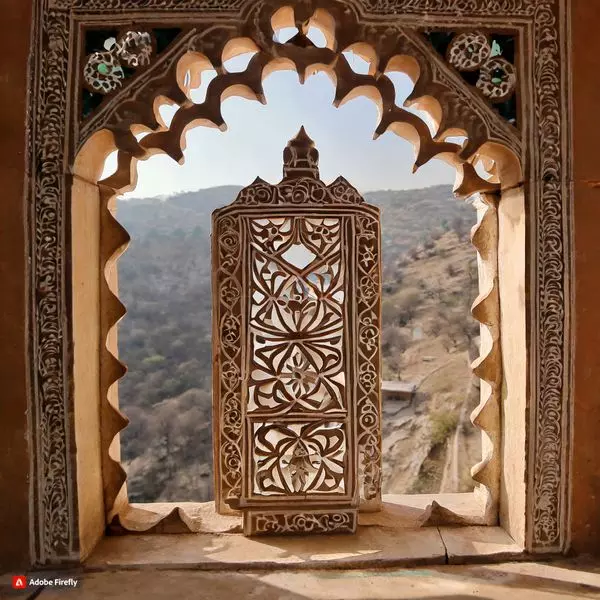
Tracing The Legacy of Jharokha: An Architectural Marvel Steeped In History
Writer: Darshita Jain
Exploring Boundaries, Breaking Barriers:Beyond the written word, I'm an adventurer, craving the thrill of discovering new places and meeting diverse souls. Whether it's the pulse of a city or the tranquility of nature, I'm on a perpetual quest to capture the essence of each destination, bringing readers along for the journey.
Rajasthan, 2 Dec 2023 8:54 AM GMT
Editor : Ankita Singh |
A literature lover who likes delving deeper into a wide range of societal issues and expresses her opinions about the same. Keeps looking for best-read recommendations while enjoying her coffee and tea.
Creatives : Darshita Jain
Exploring Boundaries, Breaking Barriers:Beyond the written word, I'm an adventurer, craving the thrill of discovering new places and meeting diverse souls. Whether it's the pulse of a city or the tranquility of nature, I'm on a perpetual quest to capture the essence of each destination, bringing readers along for the journey.
Explore the intricate world of Jharokha window design, a timeless architectural marvel with roots dating back to the Mauryan Empire. Uncover the cultural significance and historical origins of Jharokhas in Mughal and Rajput architecture, from Maharana Udai Singh II's Udaipur to the iconic Hawa Mahal in Jaipur. Immerse yourself in the delicate craftsmanship and enduring legacy of ornamental windows, seamlessly adapting to the diverse architectural tapestry of Rajasthan. Discover the blend of tradition and innovation that makes Jharokha a captivating symbol of India's rich heritage.
The enchanting allure of Jharokha, a distinctive architectural feature, graces the landscapes of both Mughal and Rajput structures, intertwining history, culture, and functionality. Although its exact origins remain shrouded in the mists of time, research suggests that the roots of Jharokha can be traced back to the Mauryan Empire around 300 BCE. As an intricate window design, it emerged as a timeless concept, bridging the expanse between the Jammuna and the Tapti rivers, as elaborated by historian R Nath, a specialist in Mughal architecture.
Historical Context:
The term "Jharokha" is believed to have evolved from 'jala gavaska,' denoting an ornately designed window. Maharana Udai Singh II introduced this architectural gem to Udaipur in 1559, etching the city's skyline with the elegance of Jharokhas. Serving both aesthetic and practical purposes, these windows were a response to the region's hot and dry climate, shielding palace residents from the sun's harsh rays while allowing the gentle caress of cool breezes.
Cultural Significance:
Beyond being architectural adornments, Jharokhas held cultural significance, offering glimpses into the outside world. Particularly noteworthy were their roles in places like the Zenana Mahal within Udaipur's City Palace, providing veiled women with a discreet connection to the surroundings. Jaipur's iconic Hawa Mahal stands as a testament to this legacy with its 953 Jharokhas, a marvel that captures the essence of Rajasthan's architectural splendor.
Imperial Influence:
Mughal emperor Akbar, a proponent of 'jharokha darshan,' integrated this architectural marvel into his daily routine, conducting official business from a strategically positioned Jharokha that faced east. This practice not only allowed public observation of his daily affairs but also symbolized a connection with the sun, aligning with Hindu and Zoroastrian customs. The enduring impact of Jharokha extends across the region, adapting to the unique character of each locale.
Regional Adaptations:
In Udaipur, where stone and white plaster dominate the urban canvas, Jharokhas showcase engraved, multifoil arches, creating a delicate and pristine aesthetic against the rugged mountain backdrop. Across Rajasthan and neighboring states like Gujarat and Madhya Pradesh, the ornamental window seamlessly adapts to the diverse architectural tapestry, embodying the rich cultural tapestry of the region
As we trace the lineage of Jharokha, we unravel a tale woven with threads of history, culture, and architectural finesse. From its ancient origins during the Mauryan Empire to its enduring presence in contemporary structures, Jharokha stands as a testament to the seamless blend of tradition and innovation. In Rajasthan and beyond, the ornate windows continue to grace palaces and monuments, preserving a rich legacy for generations to come.
Also read: The Enchanting Theyyam Dance: Reviving Ancient Tales In North Kerala
 All section
All section














